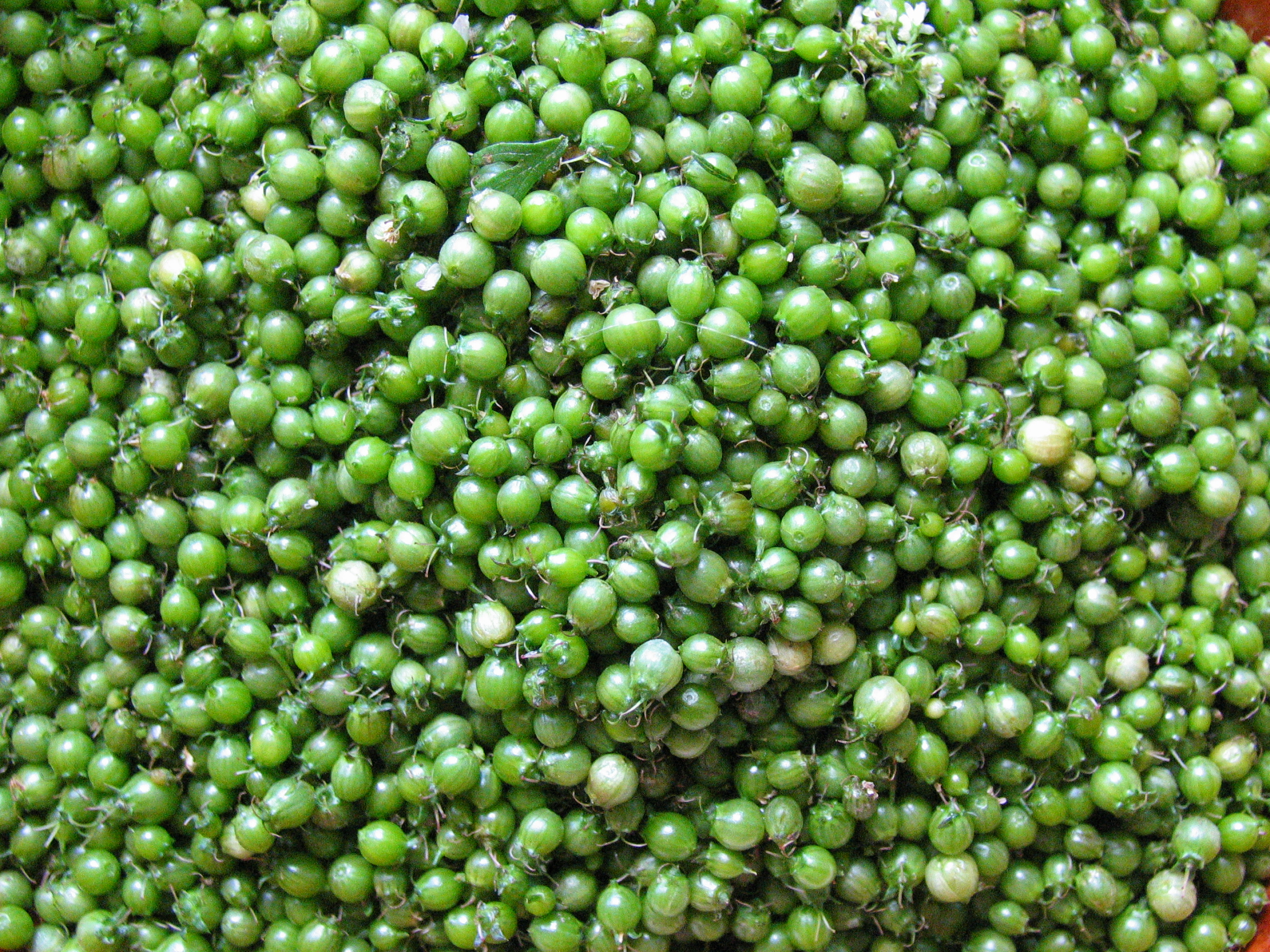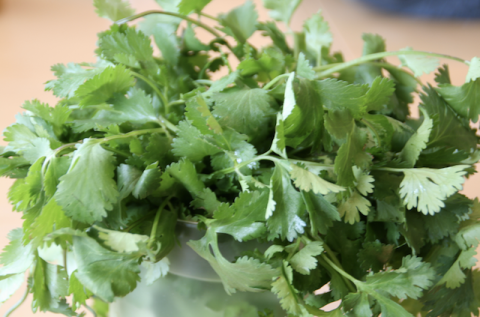Did you know that Coriander and Cilantro are the same thing? Read on…
During my Indian cooking experience as an observant, I wanted to learn the names of the ingredients in Marathi and Hindi. One of the first ingredients I learned was kothimbir, green herbs that are used in my house pretty much daily. I smelled them, and they smelled just like cilantro to me.
I had also bought some coriander powder, which was labeled as dhania in Hindi and it’s just ground coriander seeds.

I googled kothimbir and found out that they are coriander leaves, but then found out that coriander and cilantro are the same thing! What?
I did not make the connection at first because the kothimbir leaves I saw looked like this:
Instead of this (which is what cilantro looks like to me):
But they are the same thing.
When I lived in the US, cilantro was always a leafy herb, and coriander a powder that is ground from the coriander seeds.

It turns out that they both come from the same plant: coriander.
The different names are used in different regions of the world. Chinese parsley is another term for it. In Latin America and in the US it is called cilantro, the Spanish translation of coriander; in the UK they call the plant coriander and the seeds coriander seeds; and in the Middle East and Southeast Asia, people say dhania, which is the translation of coriander.
Apparently, “kothimbir” in Marathi, the local language, is the translation of cilantro (not coriander.) So I suppose they also use separate names for the herb and the powder/seed (dhania), like in the US.
A bit confused? Sorry.
The main point is that cilantro, coriander, coriander seeds, Chinese parsley, kothimbir and dhania/dhaniya. All come from the same plant.
However, keep in mind that even though they come from the same plant, they both (herb and seed) have different uses and also have different flavor and aroma. The herb is often used in Asian and Latin American cuisine, and the seed is often paired with cumin and cinnamon.
Now, when you google recipes from a different country than yours and coriander is an ingredient, you might want to make sure what they are really asking for.
You can also go share this interesting and surprising little food fact to your foodie friends. I thought it was. (Clearly, because I made a whole post about it).
Here are some great coriander/cilantro recipes for you:
Chickpea and Coriander Burgers


And for the adventurous:







Thanks for that clarification!! Out of every spice or in this case plant in India and the States.. it’s the ONLY one I don’t care for…I cannot get used to it .. maybe in tiny amounts but when overdone, I’m done!
LikeLike
I don’t care much for the seed, but the herb, which we call cilantro in Mexico, I love! I am Mexican after all and it is used widely in Mexican cuisine.
LikeLike
Yes.. I think it may be an acquired taste sort of thing!.. In NY I would order Cold Sesame Noodles at lunch time.. I never really tasted the Cilantro.. but then I got an order from and over zealous chef and whew!! that DID it.. Nimmi, my Indian neighbor cooks with it all the time but puts the brakes on it for me when I eat over.. and some recipes I really love, I notice right away if it doesn’t have it in it and I sort of miss it.. weird!!!
LikeLike
Yeah, I’ve read that cilantro can taste “soapey” to some people. And soap doesn’t really taste good haha, so maybe you are one of them. It is totally fair enough that you don’t like it. You are probably fine with it when it is a bit cooked and soaked maybe, but if it is raw, you simply hate it. And it is used raw a lot for finishing dishes. Onions for me a totally fine cooked, but I CANNOT eat them raw, I hate them raw.
LikeLike
Reblogged this on SONANT THOUGHTS.
LikeLike
I didn’t realize this until my trip to India! hehe Enjoyed your post
Jarkie @todaycommai
LikeLike
Thank you Jarkie. Same with me, I learnt this only after moving to India. 🙂 So I thought I’d share to the rest of the world.
LikeLike
Do you have a refrigerator Mani?
LikeLike
Yes, we do. Not a full size one though, medium sized, with a very small freezer section.
LikeLike
its a wonderful versatile herb 🙂 The seeds don’t make much sense until you use the powder in a curry
LikeLike
Just went into an Indian food store here in NJ and thought of you Mani.. .get on Instagram…I follow you….
LikeLike
🙂 You are sweet. Wait, what am I missing?
LikeLike
You are on Instagram right? I followed you … my name is Whimsicalitys on it…. what are you missing… lol!!!
LikeLike
Very well explained with photographs at right intercepts and carefully drafted. Great.
LikeLike
In indonesia its called “ketumbar” for coriander seeds
and “daun ketumbar for coriander leaves
LikeLike
Good blog on Coriander and cilantro!! Being an Indian and stay in pune was curious to know what is Coriander called in the other parts of the world !! And being fond of cooking, I keep on learning about cooking from different places where ever I go. I like to watch cookery shows on Tvs and read different recipes and try to cook myself…
LikeLike